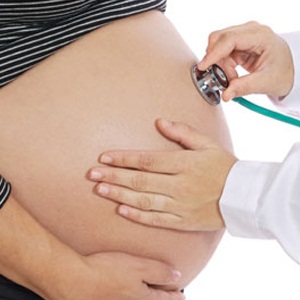
The incidence of food allergy in South African children is increasing in parallel with other westernised countries. Food allergy comes with pronounced financial and emotional costs to both the patient and his or her family, as well as health service expenses. It would, therefore, be in everyone’s interest to reduce the incidence of childhood food allergy before it even develops.
Kate Grimshaw, a dietician at the Academic Unit of Clinical & Experimental Sciences of the University of Southampton in the UK, recently published an article in the Current Allergy & Clinical Immunology journal, that discusses potential prevention strategies.
Previous strategies
Traditionally clinicians and allergy specialists recommended that a pregnant woman should avoid ingesting allergens during pregnancy and lactation, and delay the introduction of solid foods to her baby’s diet for as long as possible. This avoidance strategy is well known and most mothers with a history of allergy, or who have married into a family with allergic tendencies, consult their dieticians during pregnancy and lactation about which foods they should avoid to prevent their child from developing food-related allergies.
Unfortunately the avoidance of potential allergens before, during and after pregnancy and for long periods of a child’s life, has not proved to be particularly successful in reducing the incidence of childhood food allergy (Grimshaw, 2012).
New approaches
At the start of the 21st century the avoidance strategy was replaced by an inclusion strategy based on an expanded knowledge of nutrition and the allergenic response. According to Kate Grimshaw (2012), a number of maternal dietary factors were identified that may influence the allergic outcome of an infant, namely polyunsaturated fatty acids, probiotics, vitamins A, D, C and E, selenium, folate and zinc. Such nutrients must be included in the mother’s "healthy diet" to achieve maximum protection for her child against the development of food allergy.
a) Polyunsaturated fatty acids
Some researchers believe that the pronounced increase in the consumption of the long-chain polyunsaturated fatty acids (LCPUFAS), that is a direct consequence of our attempts to reduce our saturated and trans-fat intakes, is fuelling the increase in childhood food allergy. One group of LCPUFAS, the so-called omega-6 fatty acids, which are found in most cooking and salad oils and margarines, are used in the body to make inflammatory factors which can sensitise an individual to become allergic to a specific food.
On the other hand, another group of the LCPUFAS, which are called omega-3 fatty acids (EPA and DHA), are used in the body to make compounds that inhibit inflammatory factors (Grimshaw, 2012). Omega-3 fatty acids are found in fatty fish like salmon, tuna and mackerel. Modern diets tend to contain far too little omega-3, and far too much omega-6.
In other words, mothers who either are themselves allergic or have an allergic partner, are encouraged to increase their intakes of fish oils (the best sources of omega-3 fatty acids) during pregnancy and lactation. This will hopefully prevent the imbalance between the two types of LCPUFAS and shift the balance towards the inhibition of inflammatory factors. Omega-3 fatty acids are also important during pregnancy and lactation because they help in the development of the nervous system and vision. Infants require additional omega-3 up to the age of 2 years so that the brain, the nervous system and the eyes can develop optimally.
b) Probiotics
Beneficial microorganisms that inhabit the gut have many important functions, and one of these functions is called immunomodulation. A number of studies have found that taking probiotics (e.g. Bifidobacteria), during pregnancy can help to reduce allergic conditions such as infant atopic dermatitis, but so far no studies have concentrated on food allergy itself (Grimshaw, 2012).
c) Vitamin D
At the present moment the position of vitamin D either as an enhancer or a preventive agent of food allergy in infants is not clear. On the one hand, vitamin D has been blamed for the increase in childhood food allergy, while on the other hand this vitamin is regarded as having the potential to prevent allergy development. Until adequate studies have clarified the role of vitamin D, it may be prudent to only take vitamin D supplements if you have had blood tests done to determine if you are deficient and require vitamin D supplementation during pregnancy or lactation. Vitamin D supplementation during pregnancy and lactation should never be undertaken unless prescribed by your medical doctor.
Basic advice
Kate Grimshaw (2012) lists the following recommendations for the prevention of the development of childhood food allergy based on our current knowledge of the process:
- Pregnant women should eat a healthy, balanced diet and not avoid any of the well-known allergens (cow’s milk, egg, soya, peanuts, tree nuts, fish, etc). The same applies when breastfeeding.
- In accord with international breastfeeding recommendations all infants should be exclusively breastfed until the age of 6 months.
- Standard cow’s milk formulas are preferred, as all other formulas, including soy or goat milk formulas, or off-the-shelf goat, sheep, soy or rice milk, should not be given to infants because no convincing evidence that they prevent the development of allergies has as yet been found.
- Infants should not be weaned before the age of 17 weeks and if solids have to be introduced between the ages of 4 and 6 months, for unavoidable reasons, then only low-allergenic foods should be used.
- Continue breastfeeding if possible when you wean your child.
- Children should be introduced to all the major allergenic foods which are otherwise suitable for a young child by the age of 12 months.
- Delaying weaning of an infant beyond 6 months can be detrimental to the child’s development, and may even increase the risk of allergy.
- Mothers should try to use as little anti-reflux medication (antacids), paracetamol and non-steroidal anti-inflammatories (e.g. ibuprofen, etc) as possible during pregnancy and lactation as these medications have been linked to increased infant allergies.
This is sensible dietary advice that most pregnant and breastfeeding women are capable of putting into practice. If these measures can reduce the epidemic of childhood food allergy that threatens this country, then all mothers-to-be should at least try to use them. You could be saving your child a great deal of trauma and stress in future - and yourself as well.
- (Dr IV van Heerden, DietDoc, August 2012)
(Photo of mother and baby from Shutterstock)
(Reference: Grimshaw K, 2012. Food allergy prevention. Current Allergy & Clinical Immunology, 25(1):18-23)
Any questions? Ask DietDoc
Read more:
Rapid increase in food allergies
Allergy, intolerance: which is it?
Kids and allergies
Pregnancy and nutrition




 Publications
Publications
 Partners
Partners















